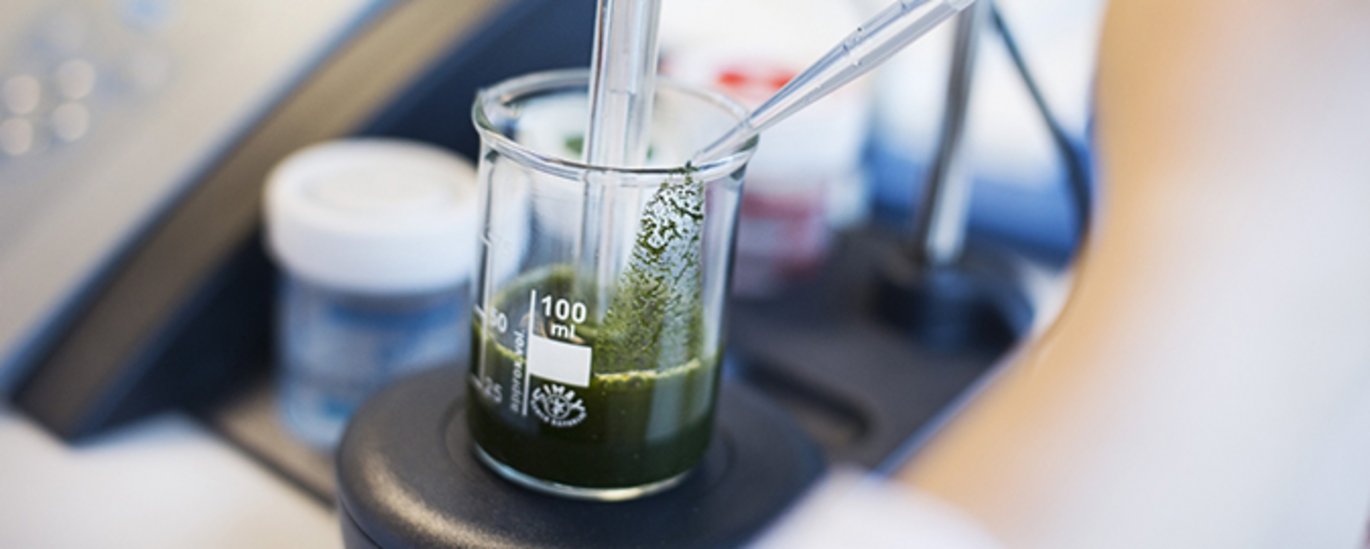Increased knowledge required on production of protein from green biomasses
Green biomasses hold a significant potential as an alternative to traditional protein sources. However, a recent report establishes the fact that further knowledge is required on the economic and environmental consequences in case an actual commercial production is implemented.

In 2015, scientists from Aarhus University and the University of Copenhagen published a report that summed up the major potentials and challenges related to an increased use of green biomasses in Denmark. The report was part of the scientific basis of the Danish Bioeconomy Panel recommendations within the area.
Now, scientists from Aarhus University – together with colleagues from the University of Copenhagen, Aalborg University and SEGES – have published a new report that sums up the current knowledge on bio-technical and economic problems in relation to a Danish production of protein from green biomasses.
When preparing the report, the scientists involved a number of actors within the area – which comprises all chains in the production – ranging from questions of yield, quality, costs and environmental impact to logistics, refining and incorporation into feed mixtures.
How to ensure a cost-effective and energy-effective production?
The scientists demonstrate that green biomasses such as grass and grass clover hold significant potential as they increase the yields in the field and may also be used to reduce agriculture’s total environmental impact. However, the green biomasses are particularly important due to their high protein contents. By applying existing knowledge, it is estimated that it will be possible to extract protein concentrate from green biomasses with the same nutritional contents as soy protein imported from South America.
We expect that this protein type may replace traditional protein sources in feeds for pigs and poultry. Apart from protein, the green crops also contain a fiber fraction, which may be used directly as cattle feed or as raw material in ethanol production.
However, we still need further knowledge to be able to assess the total economic and environmental consequences in case a commercial production is to be implemented.
One of the major questions is how to ensure a cost-effective as well as an energy-effective production in a full-scale bio refinery plant extracting protein and other high-value products from green biomasses. The report states that it is difficult to estimate startup expenses as well as operational costs due to the lack of data from existing full-scale plants.
Cost-intensive transport
Obviously, some areas are cost-intensive. For instance, there is a need to find out how to ensure the energy consumption in a bio refinery plant. The scientists have demonstrated that it is important to use residual products from green biomasses to cover part of the consumption. Once the protein concentrate and the fiber fraction have been extracted, the remaining high-moisture residual contains 5-10 % organic matter that may be fermented to ethanol or biogas.
Transport is another area to be examined, as transport costs constitute a significant part of the total costs related to green biomass production. Pre-drying the biomasses in the field seems obvious, but it is necessary to examine what this will mean to the possibilities of extracting the protein.
Finally, there is a need to explore the possibilities of extracting other valuable components from green biomasses and utilize these for human consumption as it may help improve the overall profitability of the bio-refining process.
Overall, the scientists estimate that obvious opportunities exist for protein produced in Denmark to cover a significant percentage of the Danish need for protein for livestock feed. This is of specific interest to the organic sector as we expect the need for organic protein to increase once EU requirements will entail that feed for organic livestock must be 100 % organic as from 2018.
However, further research and development is required in order to realize the full potential of an increased biomass production.
Further information
Download the report: Green biomass - protein production through bio-refining
Download the report from 2015: Green biomass
The latest report is written by:
- Department of Agroecology, AU (John E. Hermansen, Uffe Jørgensen, Poul Erik Lærke, Kiril Manevski and Birte Boelt)
- Department of Animal Science, AU (Søren Krogh Jensen, Martin R. Weisbjerg)
- Department of Food Science, AU (Trine K. Dalsgaard, Marianne Danielsen)
- Department of Molecular Biology and Genetics, AU (Torben Asp)
- Department of Engineering, AU (Morten Amby-Jensen, Claus Aage Grøn Sørensen)
- Section for Production, Markets and Policy, University of Copenhagen (Mikkel Vestby Jensen, Morten Gylling),
- Section for Plant and Soil Sciences, University of Copenhagen (Jane Lindedam),
- Department of Chemistry and Biosciences, Aalborg University (Mette Lübeck)
- SEGES - Organic Innovation (Erik Fog).
Contact
Section manager John Hermansen
Department of Agroecology, AU
Mail: john.hermansen@agro.au.dk
Phone: +45 8715 8017
Mobile: +45 2962 9538
